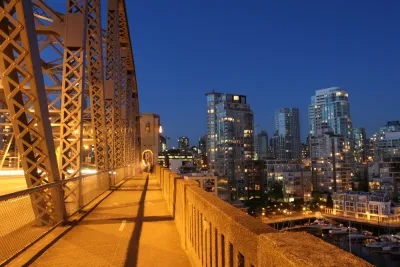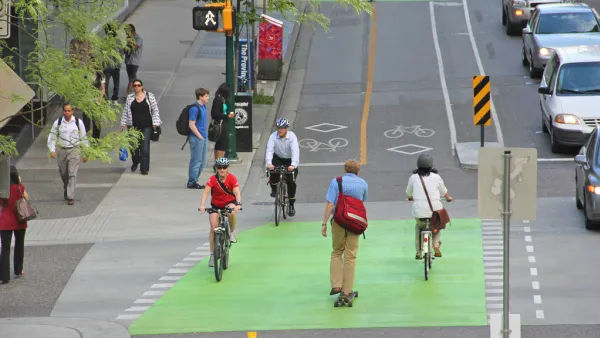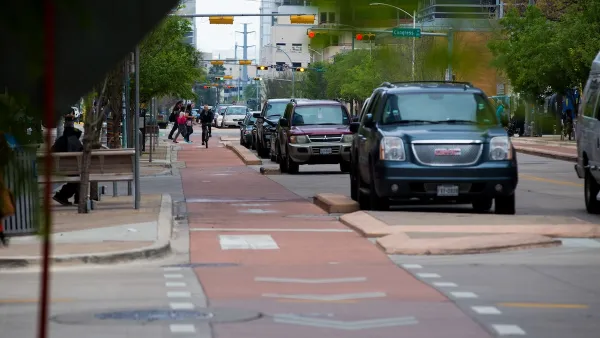Building protected bike lanes in Canada isn't as controversial as it once was. Maybe there's hope for the United States?

The Globe and Mail's editorial board dares to ask if the "war against bike lanes" is finally coming to end in Canada—with people on bikes emerging as the unlikely victor in this battle for public space.
The latest bike lane projects in Vancouver, under construction on Richard and Smithe streets on the city's downtown peninsula, moved forward without attracting controversy, , according to the editorial board—the opposite of bike lane projects in the late 2000s.
Take, for example, the opening of the city's first protected bike lane on the Burrard Bridge:
‘Chaos’ feared, blared one headline. “Doomed to failure,” opined a columnist. All that proved incorrect: The Burrard Bridge bike lane, billed as the busiest in North America, saw 1.4 million rides in 2020, 40 per cent more than its first full year a decade earlier.
The relative peace of the two latest projects in Vancouver tell a story that repeats all over the county, according to the editorial board:
Penticton, in the British Columbia Interior, this summer opened its Lake-to-Lake bike lane; it plans to invest $15-million over the next five years. Sarnia, Ont., is extending its bicycling network. In Halifax, about a third of a planned 57 kilometres of protected bike lanes is complete. It includes Hollis Street through the heart of the city. Montreal last November opened a long north-south route on Saint Denis Street as part of its Réseau express vélo network.
Toronto, spurred by the pandemic, has installed protected lanes across the city. One new segment on Bloor Street East opened in late September. These lanes are billed as temporary, but it would be a short-sighted mistake to reverse course.
What was once a "political flashpoint" and an "ideological signifier" is now "standard-issue" civic infrastructure.
FULL STORY: Is the war against bike lanes finally over?

National Parks Layoffs Will Cause Communities to Lose Billions
Thousands of essential park workers were laid off this week, just before the busy spring break season.

Retro-silient?: America’s First “Eco-burb,” The Woodlands Turns 50
A master-planned community north of Houston offers lessons on green infrastructure and resilient design, but falls short of its founder’s lofty affordability and walkability goals.

Delivering for America Plan Will Downgrade Mail Service in at Least 49.5 Percent of Zip Codes
Republican and Democrat lawmakers criticize the plan for its disproportionate negative impact on rural communities.

Test News Post 1
This is a summary

Test News Headline 46
Test for the image on the front page.

Balancing Bombs and Butterflies: How the National Guard Protects a Rare Species
The National Guard at Fort Indiantown Gap uses GIS technology and land management strategies to balance military training with conservation efforts, ensuring the survival of the rare eastern regal fritillary butterfly.
Urban Design for Planners 1: Software Tools
This six-course series explores essential urban design concepts using open source software and equips planners with the tools they need to participate fully in the urban design process.
Planning for Universal Design
Learn the tools for implementing Universal Design in planning regulations.
EMC Planning Group, Inc.
Planetizen
Planetizen
Mpact (formerly Rail~Volution)
Great Falls Development Authority, Inc.
HUDs Office of Policy Development and Research
NYU Wagner Graduate School of Public Service





























